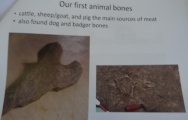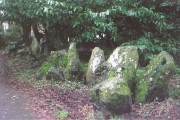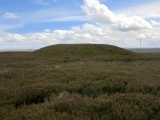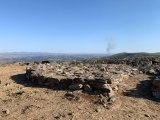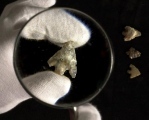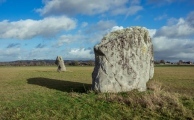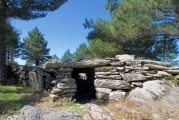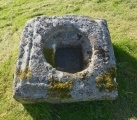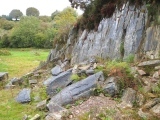Andy Burnham's Blog, page 222
September 16, 2019
Ipplepen Iron Age Settlement
Angie Lake visited the Ipplepen dig exhibition on Saturday, see lots of new photos on this page. The dig made the national news too: "New finds beef up case for redrawing map of Roman empire". An Iron Age settlement unearthed in Devon has been described as one of the most important finds of its kind. It was prompted by the chance discovery of Roman coins in fields at Ipplepen, near Newton Abbot about five years ago. Archaeologists who have been excavations for several years say it is the first of its kind in the county.
Published on September 16, 2019 07:07
September 13, 2019
2019 Convention of Alternative Archaeology and Earth Mysteries Sunday Oct 6th
The 16th Convention of Alternative Archaeology and Earth Mysteries. Britains most popular one-day ancient wisdom/earth mysteries conference. Talks from Sue Wallace and Peter Knight, Andy Burnham, John Billingsley, David Furlong and Nigel Twinn along with stalls and dowsing! Sunday Oct 6th 2019: Bouverie Hall, Pewsey, Wiltshire.
Published on September 13, 2019 10:31
Clach An Truishal
Two new panoramic photos from Bernard Edwards: Preparing to watch over-night and Morning before Bahama Storm Dorian remnant rolls in (see above). Standing Stone in Lewis. The tallest standing stone in Scotland, measuring 6 m (20ft) with an extimate 2 m underground. Nobody really knows the true purpose of this huge standing stone. Legend suggests that the stone harks back to the Norse raiders and settlers of Lewis, who marked the grave of a Norse Prince who died in a battle close to the stones location.
Published on September 13, 2019 10:10
Three Howes (Egton High Moor)
Three round cairns in a more or less NE SW alignment in a prominent position. with all round views on the summit of Brown Hill on the eastern side of Egton High Moor, North Yorkshire. The southern cairn at NZ 79457 01068 (my gps) is a 60ft diameter stony barrow, within which probing suggest lie a ring of stones. It has been dug out in the centre but there are no records of any finds.
Published on September 13, 2019 10:02
September 10, 2019
Castelo Velho de Freixo de Numão
The Castelo Velho (Portugese for old castle) is probably a sun/fire sanctuary used in the late Neolithic and the early Copper Age. It is situated on a high plane over the two rivers Douro and Cóa. The sanctuary forms a stone ring with the remains of a massive tower in the centre of the ring. Outside the ring some smaller stone circles/rings can be found. These look like archaic fireplaces.
Published on September 10, 2019 14:37
Bouldnor Underwater Settlement and Wooden Structure
A repeat of this wonderful BBC Radio 3 feature length Documentary: Under the Water - Rikke Houd accompanies a team of maritime archaeologists who are racing against time and tide at the submerged Mesolithic site of Bouldnor Cliff. More details in the comments on our page.. Ancient Settlement and Trackway in Isle of Wight. Bouldnor Cliff is a submerged Stone Age settlement off the coast of Yarmouth which was covered in silt as great sheets of ice melted at the end of the last Ice Age.
Published on September 10, 2019 13:24
Longstone Cove
This mutilated scheduled ancient monument lies on the west side of Avebury and was originally a double stone row of length 1300 metres sitting at an altitude of 152 metres. At its upper end sits a stone circle and henge and a possible pillar at its lower end. It sits in a context of other barrows in the surrounding landscape.
Published on September 10, 2019 08:31
Recinto megalitico di Santa Vittoria
The megalithic enclosure of Santa Vittoria di Esterzili, Sardinia, on the top of the mountain of the same name, includes a circular building from the Nuragic age, probably of sacred function. Above the circular building, the church of Santa Vittoria, now completely demolished, was built in historic times. The two entrances of the enclosure are preserved, one to the East and one to the West; the first keeps the architrave covering. The circular building still retains part of the bench that goes around the circumference.
Published on September 10, 2019 08:13
St Cuthbert's Church (Corsenside)
Ancient Cross and a possible Tudor way marker
in Northumberland. The cross base is 0.8m square and 0.3m high, with a moulded top. It is perhaps one of the most complex in its design we've seen recently, as it has a large circular depression cut into it, and at the bottom of this, a shallow rectangular socket hole, which Pastscape tells us is 0.3m x 0.25m x 0.1m deep. "It is raised up on one side upon small stones, and is probably not in situ".
in Northumberland. The cross base is 0.8m square and 0.3m high, with a moulded top. It is perhaps one of the most complex in its design we've seen recently, as it has a large circular depression cut into it, and at the bottom of this, a shallow rectangular socket hole, which Pastscape tells us is 0.3m x 0.25m x 0.1m deep. "It is raised up on one side upon small stones, and is probably not in situ".
Published on September 10, 2019 08:13
September 9, 2019
Craig Rhosyfelin
Brian John has just released a new video explaining his assertion that Craig Rhosyfelin as a quarry for the Stonehenge Bluestones is a Myth. More in the comments on our page. Pinpointed in new research as a possible source of one group of the Stonehenge bluestones. Their source has long been a subject of fascination and considerable controversy. Another type of bluestone, the so-called spotted dolerite, was convincingly traced to the Mynydd Preseli area in north Pembrokeshire in the early 1920s
Published on September 09, 2019 09:47

